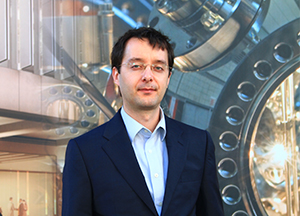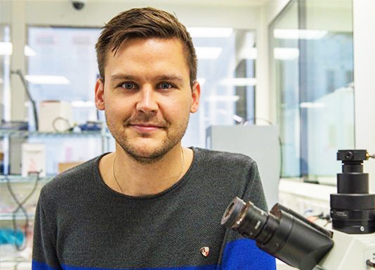This month’s ARC funding round saw FLEET research and researchers across five universities awarded additional funding.
Across eight separate grants, almost $4.6m new research funding went to projects and facilities led by or involving FLEET researchers or directly contributing to FLEET’s search to develop ultra-low energy electronics and boost related areas of research.
Two projects in particular will be key to FLEET research success: a new materials characterisation facility at Monash and RMIT, and a quantum gas microscope at Swinburne.
In all, $33.5 million of funding was announced for research from cochlear implants to megafauna extinction. See the ARC media releases for Discovery Projects, early-career researchers (DECRA) and new infrastructure and facilities (LIEF).
Infrastructure, equipment and facilities (LIEF) funding

Jan Seidel, UNSW uses scanning probe microscopy to study oxide material systems, patterning electrical & magnetic order in topological materials at the nanoscale
Jan Seidel, Nagy Valanoor and Oleg Sushkov and collaborators at UNSW will establish a photomagnetic materials characterisation facility to provide the finest measurements yet made on magnetisation signals in two-dimensional oxides that can be formed at the interface between materials. Topological insulators formed at such interfaces could form the basis of new topological transistors in FLEET’s research theme 1. *details
Michael Fuhrer and Mark Edmonds (Monash University), Kourosh Kalantar-Zadeh, Lan Wang and Jianzhen Ou (RMIT University), Jan Seidel (UNSW) and other collaborators will develop a joint cryogenic materials characterisation facility at Monash and RMIT. The characterisation of electrical/magnetic properties of materials at extreme conditions, such as temperature or magnetic field, will support FLEET’s development of large-bandgap topological materials for room-temperature topological transistors. *details
Chris Vale (Swinburne University of Technology), Kris Helmerson and Meera Parish (Monash University), Matt Davis (University of Queensland) and colleagues will create a quantum gas microscope to study Bose-Einstein condensates formed of ultra-cold dysprosium atoms, studied as part of FLEET’s research theme 3, light-transformed materials. *details
Lan Wang and a team at RMIT will build a photoelectron spectroscopy platform allowing researchers to characterise the surface structure and electronic properties of materials using angle-resolved photo spectroscopy (ARPES) . The new open-access photoelectron spectroscopy facility at RMIT will be used in applications such as solar energy and biotechnology, as well as in FLEET’s Enabling Technology A, atomically thin materials. *details
Qiaoliang Bao (Monash University) and Jian Zhen Ou (RMIT University) are part of a collaboration led by the University of Technology, Sydney to establish a national facility for nanoscale characterisation of luminescent materials, including the atomically-thin materials that underpin FLEET research at Monash and RMIT. *details
Discovery Project finding

Torben Daeneke (RMIT) is investigating piezoelectricity in two-dimensional nanocrystals and devices
Jian Zhen Ou and Torben Daeneke and colleagues at RMIT will investigate piezoelectricity of two-dimensional nanocrystals and devices. The project’s extensive nanoscale device fabrication activities are synergistic with FLEET’s Enabling Technology B, nanodevice fabrication and both projects will benefit from exchange of ideas. *details
Kris Helmerson (Monash University) and collaborators are working to make optical wireless communication to handheld mobile receivers to build an optical wireless communications tool that combines holographic filters and microsystems to realise a new form of receiver. *details
Early career researcher (DECRA) funding
David Cortie at the University of Wollongong earned a DECRA early-career fellowship to continue research into the magnetic properties of topological insulators, seeking to control magnetism at an atomic level with potential for new-generation, ultra-low energy electronics. *details
